Types of Pit Bulls and Their Characteristics
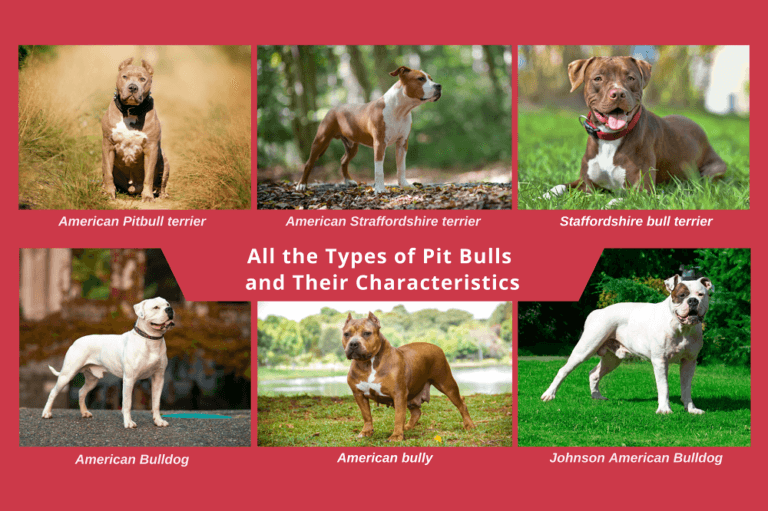
It’s common to think that when we talk about pit bulls, we’re referring to a single breed, but this isn’t always the case. Maybe you’ve seen a dog similar to what you know as a pit bull, but with some differences. So, you’re most likely wondering how many types of pit bulls there are.
In fact, the term pit bull is often used to refer to a group of breeds that have similar characteristics. However, it’s not a breed by itself, nor is it endorsed as such by recognized entities. Therefore, here’s a list of all those pit bull breeds that are often confused.
What are the different types of pit bulls?
The different types of pit bulls were born in England, Ireland, and Scotland sometime in the 19th century. As indicated by the American Kennel Club (AKC), dog fighters were looking for a breed that was strong and agile but gentle with people.
To achieve this, they began to cross bulldogs and terriers. The result was a series of breeds with similar characteristics, which today we know as types of pit bulls. However, the breed as such was never recognized due to its origin associated with fighting, although the closest may be the American pit bull terrier.
Instead, as time went by, these dogs already evolved, and uniform subsets of the pit bull population were recognized under other names. Below, we’ll tell you about these recognized breeds and their main characteristics.
1. American pit bull terrier
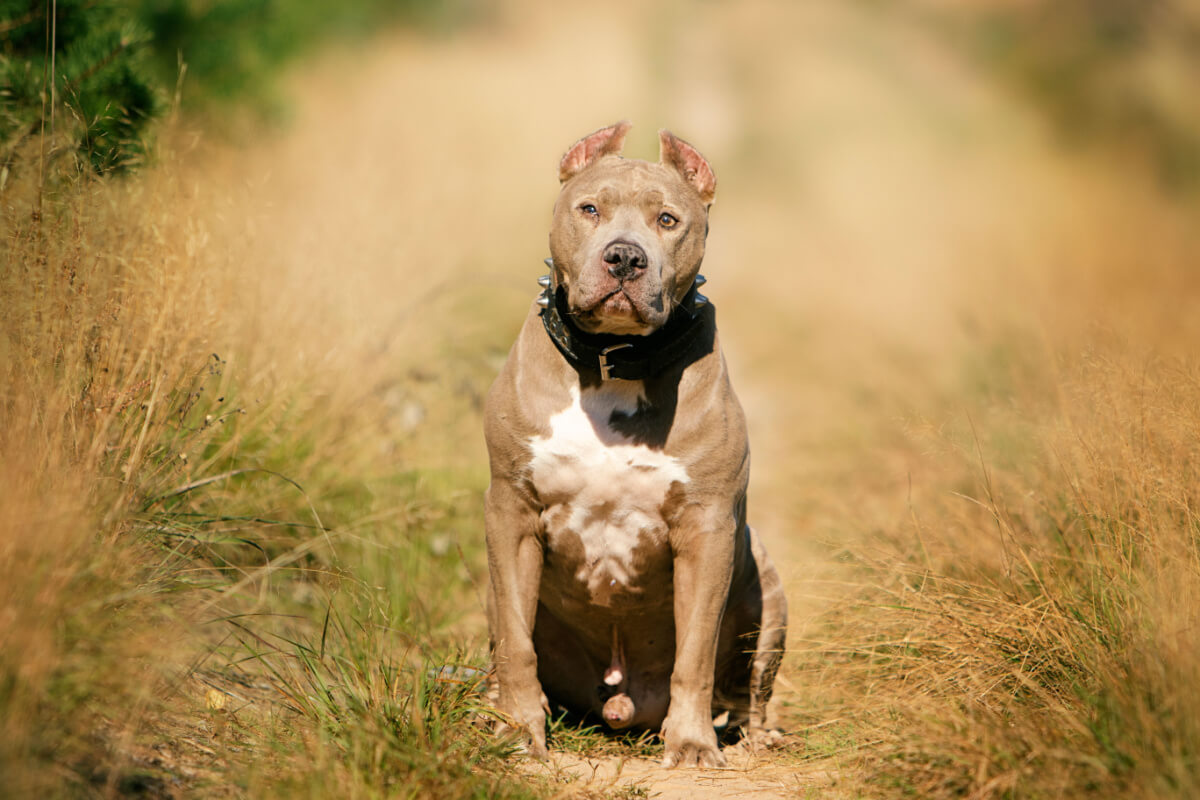
The American pit bull terrier’s coat is short, shiny, smooth, and somewhat stiff to the touch.This is the first of the well-defined pit bull breeds, which has persisted for more than 150 years. As such, it’s often thought to be the closest to the pit bull. However, the American Kennel Club doesn’t recognize it as a breed, although the United Kennel Club (UKC) does.
The American pit bull terrier is a medium-sized dog, with a body that’s longer than it is tall. Its head has a broad, flat skull with a broad muzzle. The ears are short and wide and, like the tail, may or may not be cropped. It can also have different colors, from brown to black, except merle.
They usually weigh between 27 and 60 pounds. It’s a strong, athletic, and agile dog. This makes it a great canine climber. As for its character, it possesses the following characteristics:
- Enthusiastic
- Eager to please
- Friendly even with strangers
Therefore, it’s a family companion dog and is very loving with children. Nevertheless, it must be trained in order to learn to socialize – especially with other animals – and to burn energy. Otherwise, it may show aggression. Even so, violent behavior toward people is rare.
2. American Staffordshire terrier

Also known as AmStaff, this AKC-accepted breed is one of the most gentle and affectionate types of pit bulls with people. The American Staffordshire terrier can be a loyal and reliable friend until its last days, provided it’s well-bred and socialized.
Its weight varies between 40 and 70 pounds. At the same time, it’s usually only slightly shorter than the American pit bull terrier, with a height of up to 19 inches. It has a broad head with a well-defined jaw. Also, it stands out for its wide-set dark eyes and these other qualities:
- Confident
- Guardian
- Intelligent
- Personality
- Athletic and energetic
An American Staffordshire terrier requires play sessions with its family to maintain its physical health and psychological well-being.
Likewise, to maintain a good character, it’s crucial to provide training from puppyhood. Despite this, the American Staffordshire terrier can be aggressive with other dogs, so caution should be exercised.
3. Staffordshire bull terrier
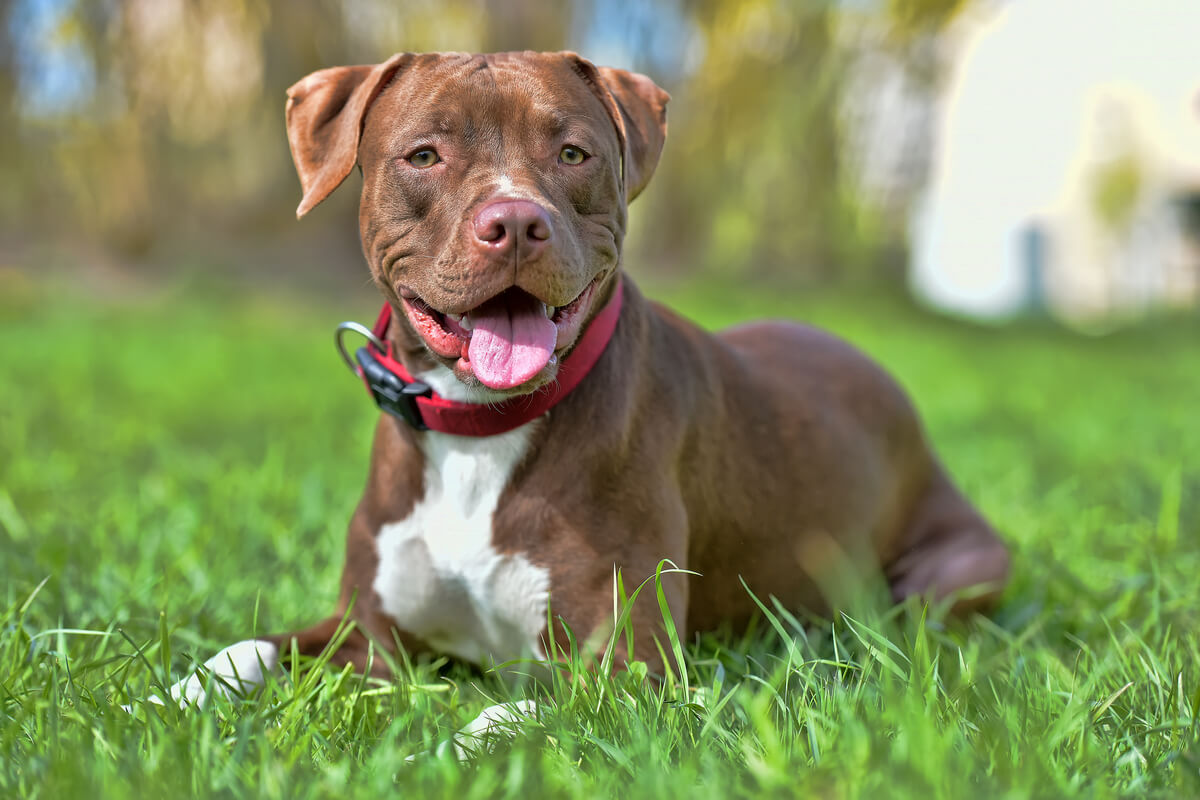
Also of medium size, this is another of the types of pit bull breeds that were born due to the crossbreeding between the bulldog and the terrier. It’s a slightly smaller dog, with a weight that varies between 22 and 37 pounds, and a height of up to 16 inches. However, it maintains its wide and short legs, as well as the muscles in its legs.
The Staffordshire bull terrier breed retains the courage and tenacity of its past as a fighting dog. Even so, the education it has received has completely transformed it. Today, we can attribute these traits to it:
- Loyal
- Protective and courageous
- Affectionate with its family and with children.
This is a dog that learns very easily. In view of this, and because of its aggressive history, it’s important that it be trained and socialized from an early age with other dogs to avoid unwanted behavior.
Likewise, to keep its mind and body in shape, it needs to exercise a lot. However, be careful with high temperatures, as it may not tolerate heat. As a point to consider, the Staffordshire bull terrier can develop skin allergies, so it should have its skin checked frequently. It’s worth mentioning that this is also a breed recognized by the AKC.
4. American bulldog
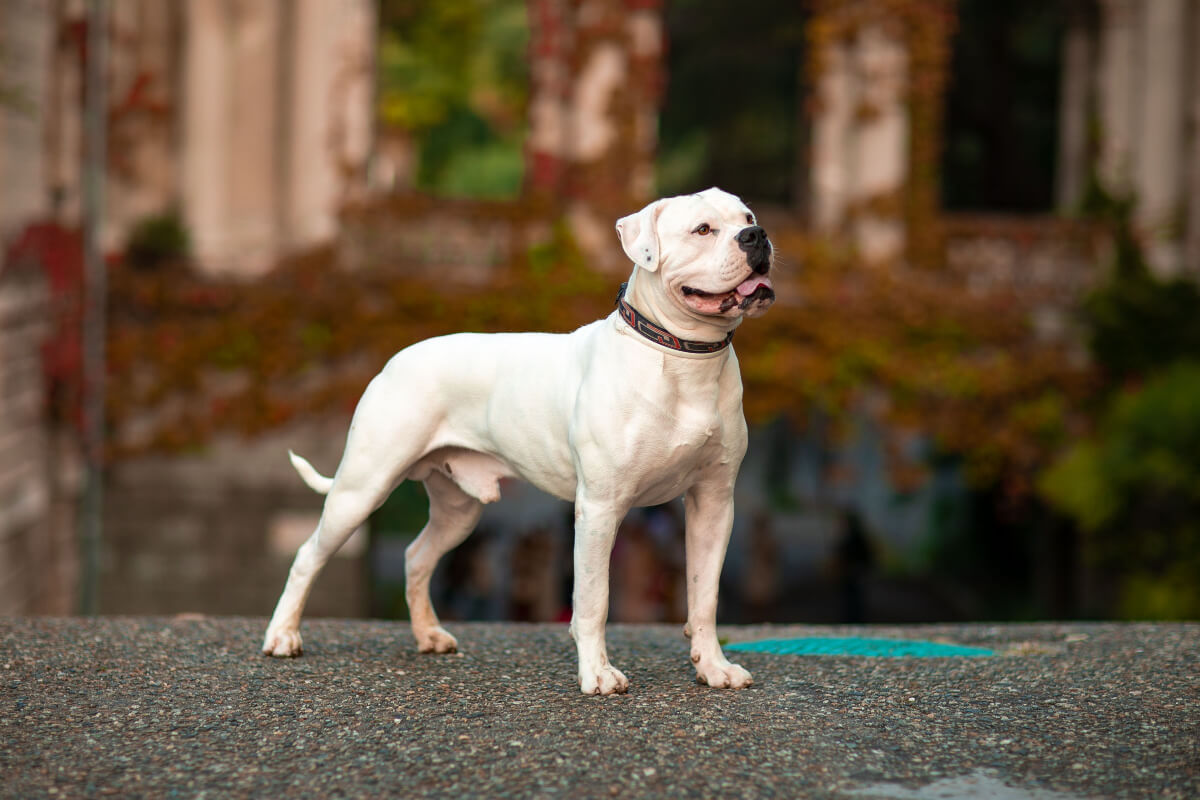
Its origin comes from the English bulldog, which was bred to work on farms as a cattle dog or guardian. It’s also called “standard” or “Scott type”. It weighs between 60 and 99 pounds. It has great strength, endurance, and agility, and its character is determined by the following traits:
- Loyal
- Guardian
- Self-confident
- Almost clownish behavior when happy
- Reluctant to strangers if not taught to socialize as a child
The American bulldog (a breed accepted by the AKC) is muscular, with a large head and ears that may or may not droop. As with the previous breeds, it’s important that it receives training to avoid aggression, especially with strangers.
As these dogs have a lot of energy, it’s best to encourage them to burn off their during play sessions. However, you need to be careful, as hip dysplasia and joint problems are common in this breed. For this very reason, calcium supplementation is suggested, although you should consult with your veterinarian first.
5. Johnson type bulldog
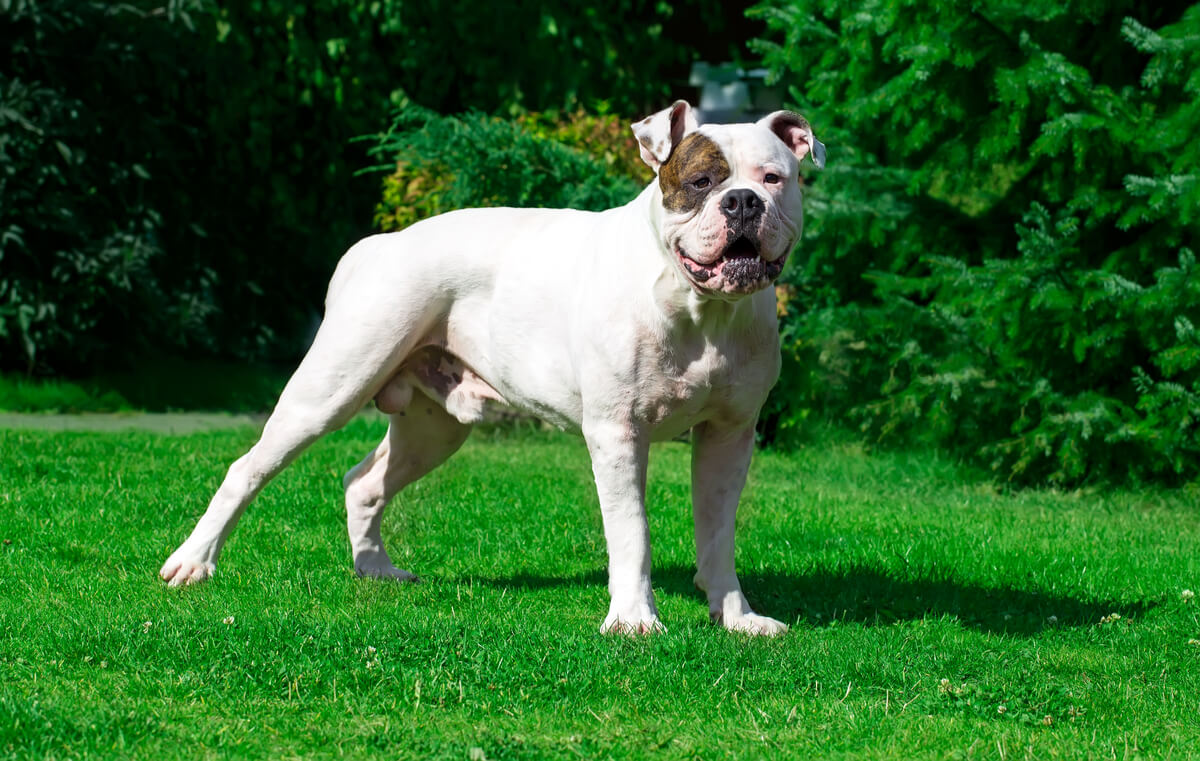
Unlike the standard bulldog or Scott type, the Johnson type bulldog comes from another lineage, but it’s not a separate breed from the American bulldog. In this case, the American bulldog is less athletic and has a bulkier body, larger bones, and a shorter muzzle. In addition, it tends to have a less graceful demeanor.
Therefore, the weight of this dog is greater and it has a more powerful appearance. It also tends to have more folds in the face than the standard type. Aside from this, its behavior and requirements are the same.
6. American bully
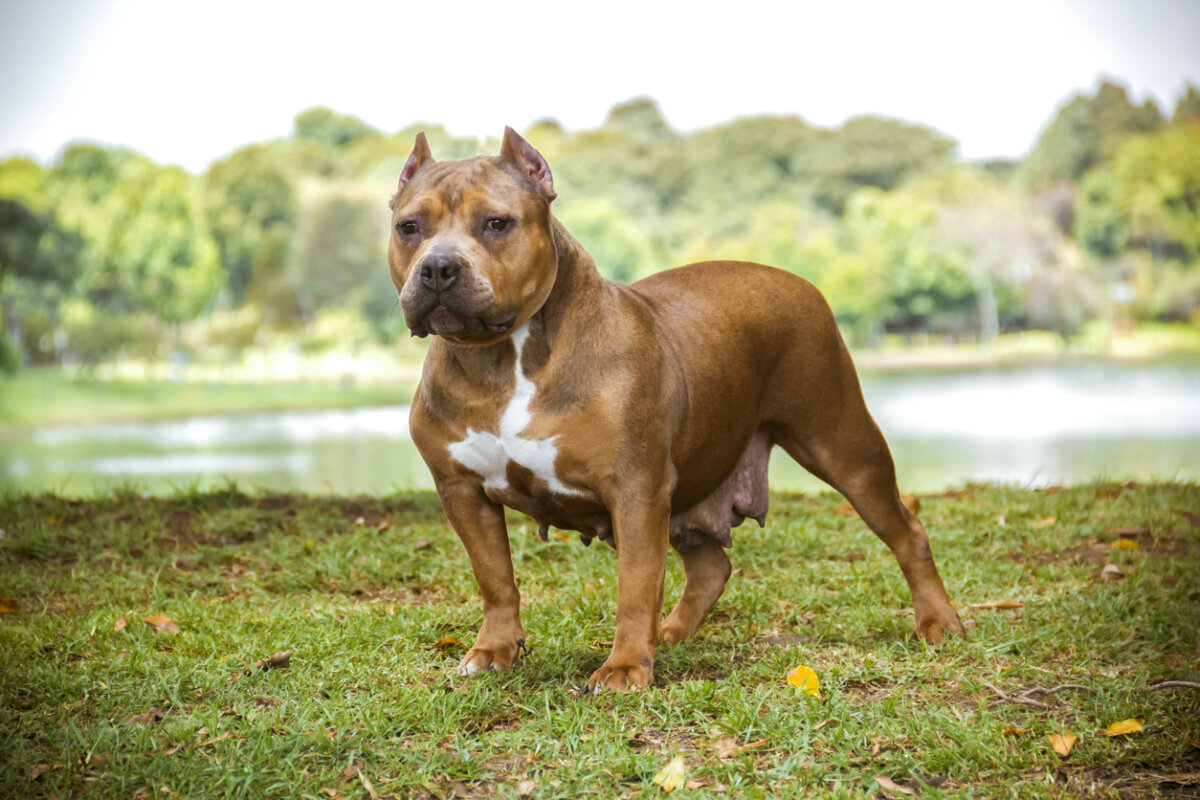
The American bully is an extension of the American pit bull terrier. The United Kennel Club recognized this breed in 2013. In contrast, the American Kennel Club doesn’t yet accept it.
It has a stocky, compact build. In addition, it has a short coat of various colors, except merle. Its body usually measures between 95 and 110 inches in height, although it can be taller or shorter, such as the American bully pocket.
Despite its size and vigorous appearance – like other pit bull breeds – it’s agile and active. Among its temperament traits, the following stand out:
- Loyal
- Kind and friendly
- Affectionate with the family
Thanks to these qualities, it’s a great dog for a family. Its attitude is confident and cheerful, which is noticeable when it moves. At the same time, aggressive behavior toward other people isn’t characteristic of this breed.
7. Bull terrier
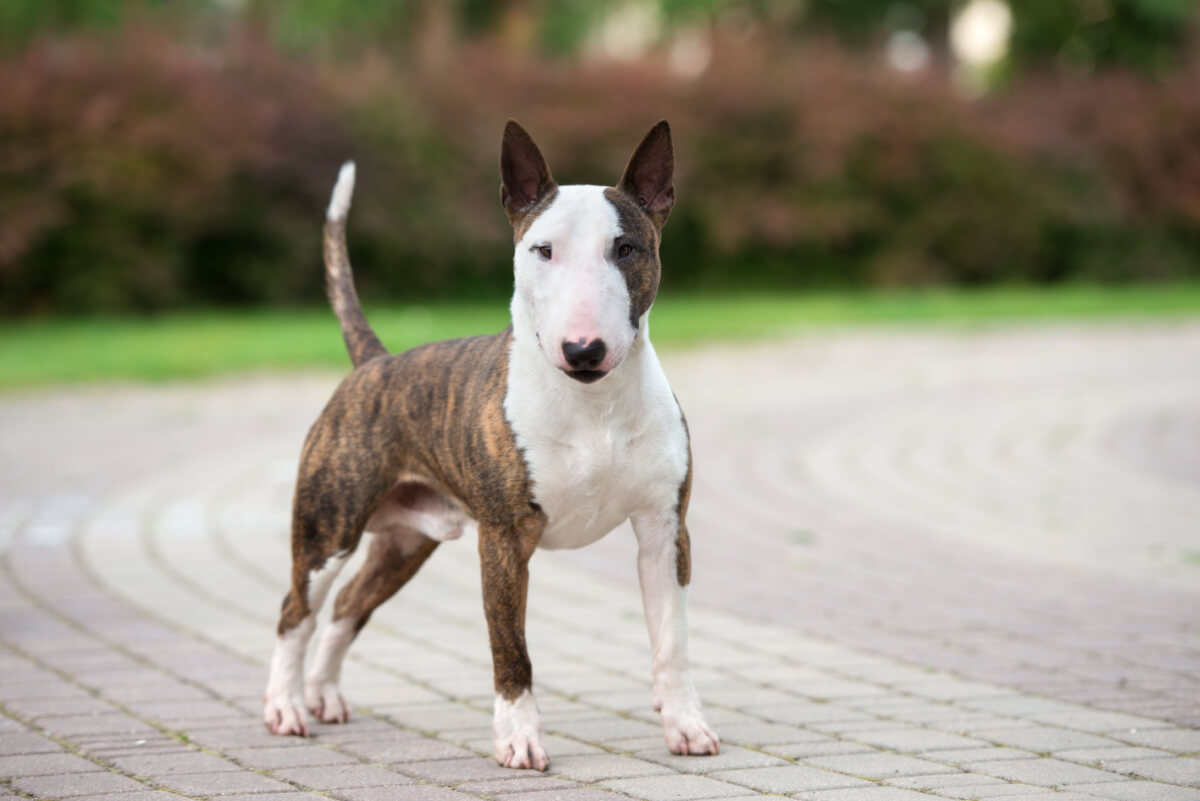
The bull terrier is also cataloged among the types of pit bulls and is a descendant of crosses between the bulldog and the terrier, as its name indicates. In this case, it’s recognized by the AKC. Its characteristic feature is the shape of its head, which is elongated and egg-shaped. It’s also robust and muscular, weighing up to 68 pounds. The following traits characterize this breed:
- Loyal
- Stubborn
- Entertaining
- Playful and mischievous
Given these qualities, it’s important that they’re entertained so that they cooperate with their training.
Likewise, they’re affectionate with their family and good with small children, but they can have problems with other pets. As for their health, it’s important to pay attention to kidney, heart, and hearing problems.
To successfully raise a bull terrier as a pet, it’s essential to socialize it with people and other animals from an early age. In addition to this, it’s crucial to train it with determination and affection and to give them plenty of exercise. The most important thing is that they spend quality time with the family.
8. Miniature bull terrier, one of the smallest types of pit bull
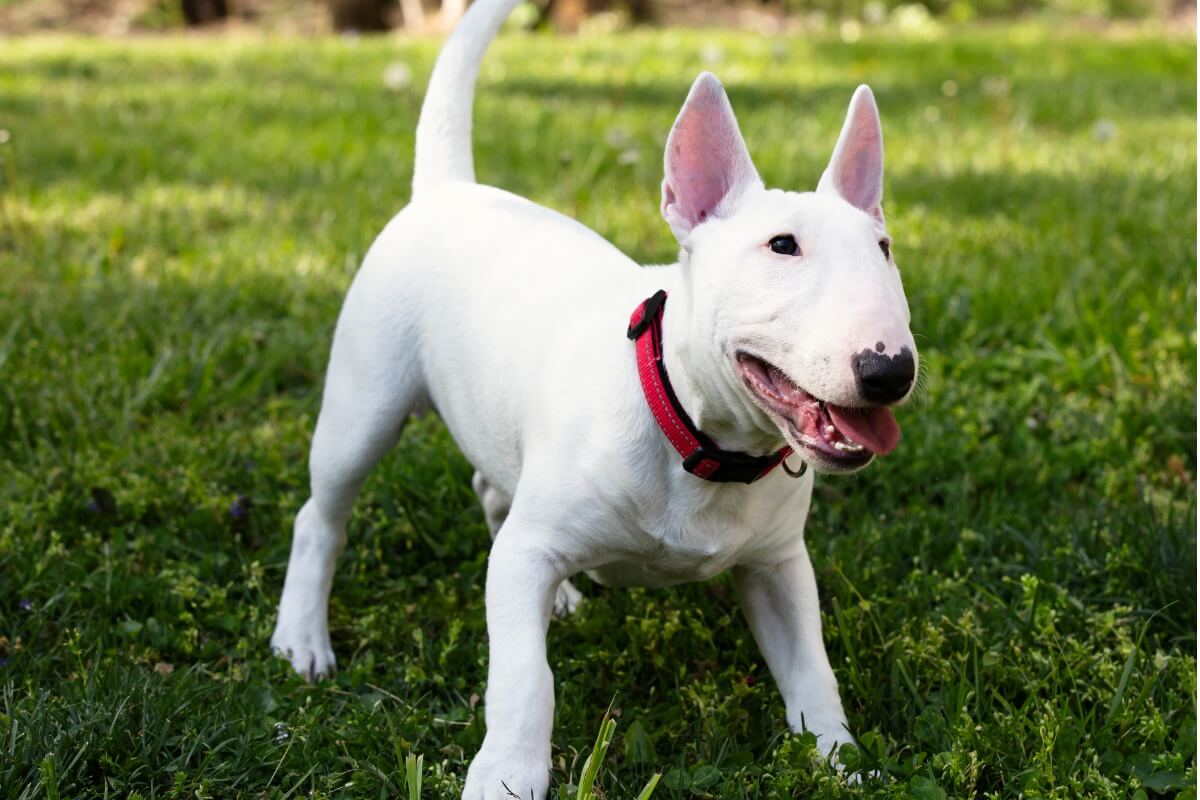
Unlike the bull terrier, which measures approximately 21 inches, the miniature breed is a type of pit bull that barely reaches 14 inches at the most. At the same time, it weighs between 18 and 26 pounds. This is the origin of its name, but it’s still a bull terrier. Therefore, the AKC accepts this breed.
As such, it shares its basic traits and temperament. Therefore, it’s playful and usually good-natured. Also, it can be surly with other pets, a problem that can be overcome with training and early socialization. It’s a canine that is characterized by the following traits:
- Curious
- Intelligent
- Independent
It’s possible to cross a bull terrier with a miniature bull terrier to obtain this breed. However, you need to pay attention to possible physical problems, such as the following:
- Deafness
- Dislocations
- Heart disease
Also, care should be taken with certain activities and physical exercise when they’re puppies, as they’re often prone to sudden lameness.
Other types of pit bulls
The breeds described so far are those that are accepted as a subset of pit bulls by the various dog registries or organizations. However, there are other types of pit bulls that are somewhat accepted in certain countries. We’ll tell you what they are below.
9. Blue pit bull
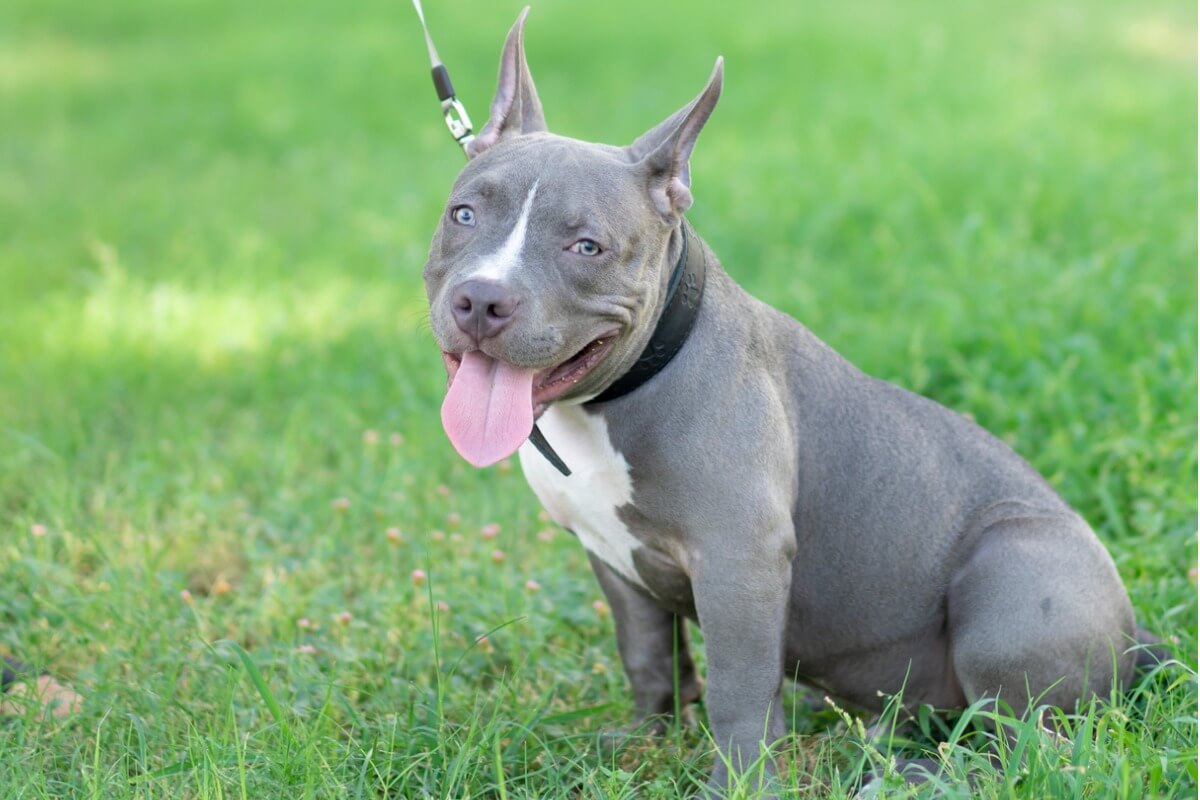
The blue pit bull isn’t a breed as such, but rather a variety of the American pit bull terrier. The word blue refers to its blue-gray coat and nose. This mark characterizes it and distinguishes it from the traditional pit bull.
Likewise, its eyes have a light shade, between hazel and light blue. This characteristic is believed to come from the crossing of the American pit bull terrier with an extinct breed, the blue paul terrier.
It has a significant musculature, and its weight reaches up to 60 pounds. This is as long as it stays in shape. Other than that, the energetic and friendly temperament is the same.
10. Red-nosed pit bull
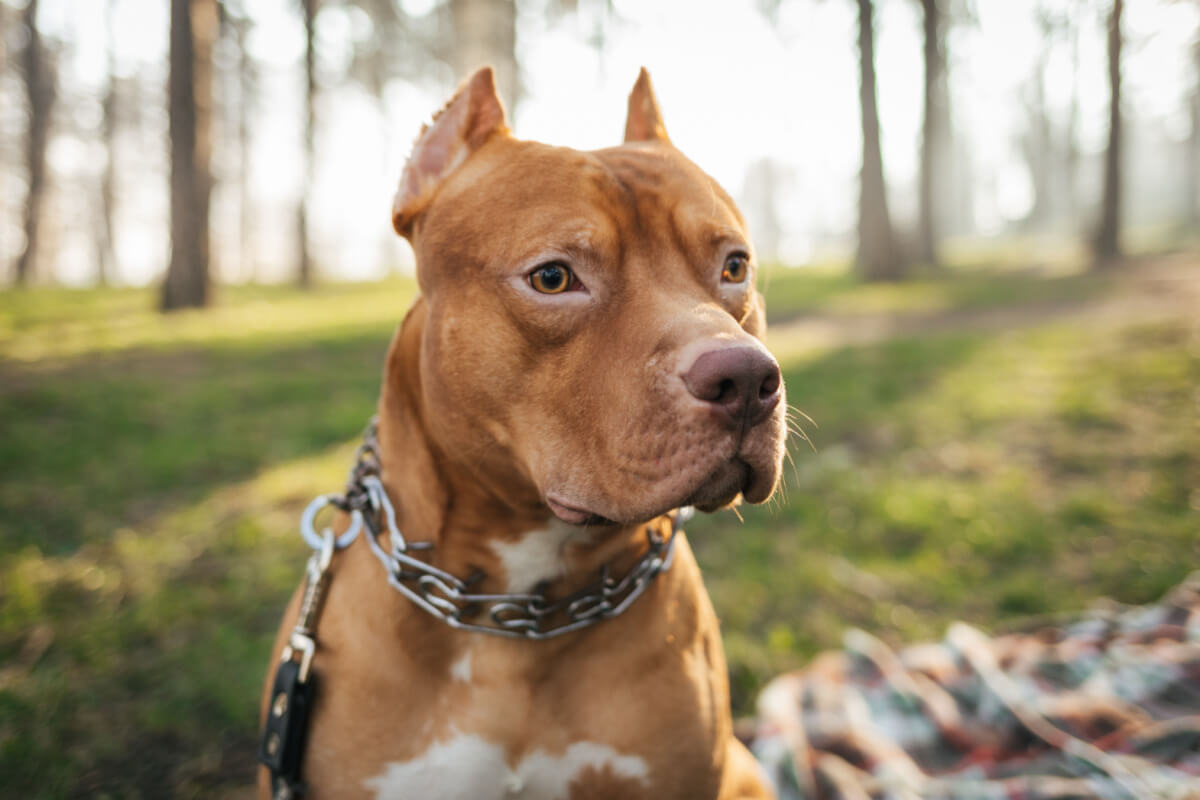
The so-called “red-nosed pit bull” is also an American pit bull terrier that possesses this quality. Therefore, more than a pit bull breed, it’s a variety within it.
It has the same great musculature, build, and strength as the aforementioned breed. Likewise, its temperament is similar. In both cases, the blue and red nose is allowed within the colorations of the breed. It’s simply a color that affects the nose.
11. Pit monster: One of the types of pit bull of the 21st century
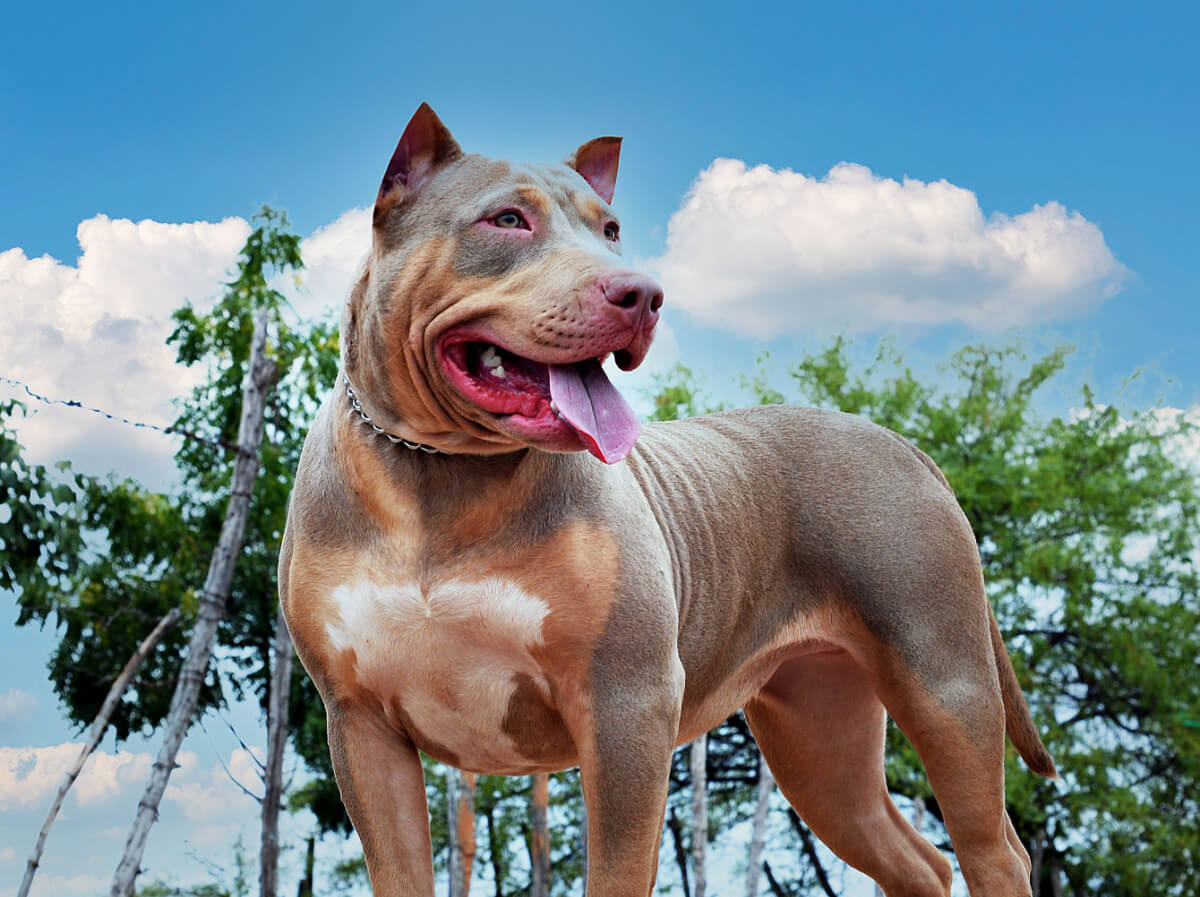
Pit monsters are a recent Brazilian breed of pit bull that was created in this century. It was accepted by the Kennel Club of Latin America but not by entities of other countries. Its origin was born from the crossing of other pit bull breeds and was influenced by the corpulent size of the American bully.
Therefore, it’s a robust, well-balanced, and heavy dog that can measure up to 25 inches. Despite its appearance, it’s characterized by its pleasant and affectionate personality, both with children and other dogs. At the same time, it’s moderately active.
12. Mexican pit bull or “chamuco”
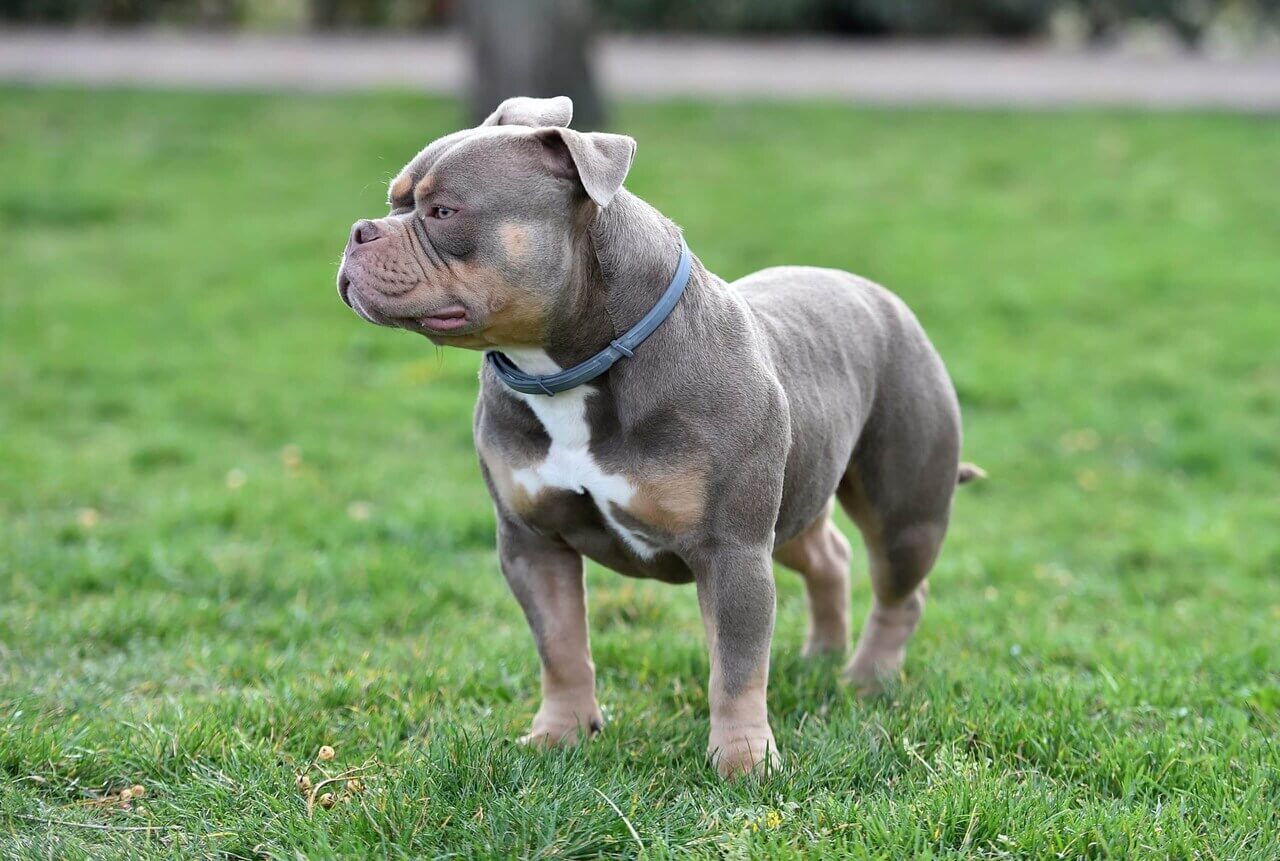
This breed may have risen from a cross between the Mexican bulldog and the American pit bull terrier. Unlike other types of pit bulls, the Mexican pit bull is smaller but just as stocky. Likewise, its ribs are more pronounced.
It shows the same devotion to its family as the rest of these breeds. It’s also protective and can attack if it’s not well-trained. It can be of any coat color, although brown and black are the most common.
13. Pit bull cobra
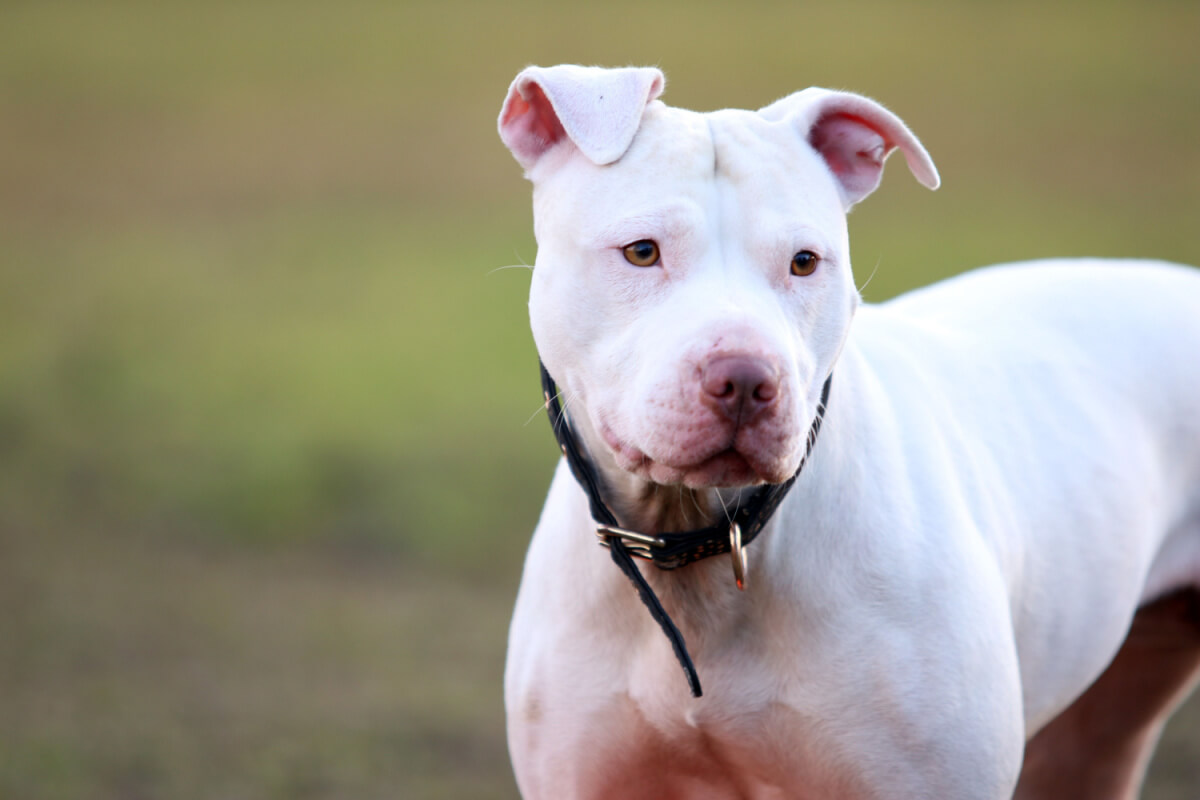
This is an unrecognized breed or variant of pit bull. The belief is that it was born from crosses between different breeds, but this is uncertain. It’s usually related to the red-nosed American pit bull terrier because it has that characteristic.
As a trait, besides the reddish muzzle, it has an all-white coat. Otherwise, its character is similar to the aforementioned breed. It’s a robust but energetic dog that needs frequent physical activity. Also, training is important to avoid aggressiveness.
14. Pitmatian

This pit bull variant is believed to have been born from a cross between one of the recognized pit bull breeds and a Dalmatian. This originates from its distinctive coat of white with black spots along the body and face.
Its weight is usually less than that of the different pit bull breeds seen so far. The muzzle is more elongated, as it more closely resembles the shape of the Dalmatian. At the same time, although it’s a medium-sized dog, its build is less robust.
15. Pynat pit bull

The so-called pynat pit bull isn’t a breed but rather a variant characterized by its brown colors. These shades can vary from lighter to darker, but the brindle spots are usually the identifying feature.
It can be an American Staffordshire terrier or an American pit bull terrier. In any case, the brindle shade is allowed. Therefore, the physical traits and nature will vary according to the breed in question.
Considerations regarding the types of pit bulls
Pit bull breeds generally live between 10 and 14 years. In addition, they’re friendly animals, so they tend to be affectionate with their family environment, although distrustful of strangers.
Their character makes them guardians and protective animals. They’re also very energetic, so they need daily exercise and training so they can drain their energy and avoid unwanted behaviors.
Are pit bulls dangerous animals?
In general, these pit bull breeds aren’t usually dangerous. However, they need to be trained from puppyhood to avoid being so. Above all, because they can be aggressive with other dogs. Just the same, it’s always a good idea to take them for walks with a muzzle and leash.
At the same time, it’s crucial to know that there are some cities or countries where having one of these breeds isn’t legal. This is because pit bulls have gained a reputation for attacking people and other animals. For this reason, if you’re thinking of owning one, you should consult beforehand about its legality.
What are the most common diseases?
These types of pit bulls are, in general, healthy animals. However, it’s normal for many of these breeds to have skin allergies. In fact, in some cases, they may be genetic, as is the case with the Staffordshire bull terrier.
It’s common for American Staffordshire terriers to be unable to coordinate muscles between 3 and 5 years of age. However, it’s possible for breeders to identify this problem to avoid reproducing it in future generations.
How to feed a pit bull?
Pit bulls generally do well with high-quality food. Although, in all cases, it’s important to consult with a veterinarian about their quantity and nutritional adjustments.
Some of these breeds, such as bull terriers, may require higher calcium intake when they’re puppies.
In addition to this, care must be taken with caloric intake, as some dogs of these breeds can become overweight. For example, treats are often appropriate during training but can be harmful if given in excess.
Did you know about these types of pit bulls?
As we’ve seen, there are many breeds that are considered types of pit bulls. Those associated with their mongrel origin between the terrier and the bulldog are the first ones we mention on this list.
The rest of the breeds are often confused with them, but they have diverse origins that don’t coincide with that of the pit bulls. However, their behavior or physical appearance isn’t usually distinguished by those who spot them.
It’s common to think that when we talk about pit bulls, we’re referring to a single breed, but this isn’t always the case. Maybe you’ve seen a dog similar to what you know as a pit bull, but with some differences. So, you’re most likely wondering how many types of pit bulls there are.
In fact, the term pit bull is often used to refer to a group of breeds that have similar characteristics. However, it’s not a breed by itself, nor is it endorsed as such by recognized entities. Therefore, here’s a list of all those pit bull breeds that are often confused.
What are the different types of pit bulls?
The different types of pit bulls were born in England, Ireland, and Scotland sometime in the 19th century. As indicated by the American Kennel Club (AKC), dog fighters were looking for a breed that was strong and agile but gentle with people.
To achieve this, they began to cross bulldogs and terriers. The result was a series of breeds with similar characteristics, which today we know as types of pit bulls. However, the breed as such was never recognized due to its origin associated with fighting, although the closest may be the American pit bull terrier.
Instead, as time went by, these dogs already evolved, and uniform subsets of the pit bull population were recognized under other names. Below, we’ll tell you about these recognized breeds and their main characteristics.
1. American pit bull terrier

The American pit bull terrier’s coat is short, shiny, smooth, and somewhat stiff to the touch.This is the first of the well-defined pit bull breeds, which has persisted for more than 150 years. As such, it’s often thought to be the closest to the pit bull. However, the American Kennel Club doesn’t recognize it as a breed, although the United Kennel Club (UKC) does.
The American pit bull terrier is a medium-sized dog, with a body that’s longer than it is tall. Its head has a broad, flat skull with a broad muzzle. The ears are short and wide and, like the tail, may or may not be cropped. It can also have different colors, from brown to black, except merle.
They usually weigh between 27 and 60 pounds. It’s a strong, athletic, and agile dog. This makes it a great canine climber. As for its character, it possesses the following characteristics:
- Enthusiastic
- Eager to please
- Friendly even with strangers
Therefore, it’s a family companion dog and is very loving with children. Nevertheless, it must be trained in order to learn to socialize – especially with other animals – and to burn energy. Otherwise, it may show aggression. Even so, violent behavior toward people is rare.
2. American Staffordshire terrier

Also known as AmStaff, this AKC-accepted breed is one of the most gentle and affectionate types of pit bulls with people. The American Staffordshire terrier can be a loyal and reliable friend until its last days, provided it’s well-bred and socialized.
Its weight varies between 40 and 70 pounds. At the same time, it’s usually only slightly shorter than the American pit bull terrier, with a height of up to 19 inches. It has a broad head with a well-defined jaw. Also, it stands out for its wide-set dark eyes and these other qualities:
- Confident
- Guardian
- Intelligent
- Personality
- Athletic and energetic
An American Staffordshire terrier requires play sessions with its family to maintain its physical health and psychological well-being.
Likewise, to maintain a good character, it’s crucial to provide training from puppyhood. Despite this, the American Staffordshire terrier can be aggressive with other dogs, so caution should be exercised.
3. Staffordshire bull terrier

Also of medium size, this is another of the types of pit bull breeds that were born due to the crossbreeding between the bulldog and the terrier. It’s a slightly smaller dog, with a weight that varies between 22 and 37 pounds, and a height of up to 16 inches. However, it maintains its wide and short legs, as well as the muscles in its legs.
The Staffordshire bull terrier breed retains the courage and tenacity of its past as a fighting dog. Even so, the education it has received has completely transformed it. Today, we can attribute these traits to it:
- Loyal
- Protective and courageous
- Affectionate with its family and with children.
This is a dog that learns very easily. In view of this, and because of its aggressive history, it’s important that it be trained and socialized from an early age with other dogs to avoid unwanted behavior.
Likewise, to keep its mind and body in shape, it needs to exercise a lot. However, be careful with high temperatures, as it may not tolerate heat. As a point to consider, the Staffordshire bull terrier can develop skin allergies, so it should have its skin checked frequently. It’s worth mentioning that this is also a breed recognized by the AKC.
4. American bulldog

Its origin comes from the English bulldog, which was bred to work on farms as a cattle dog or guardian. It’s also called “standard” or “Scott type”. It weighs between 60 and 99 pounds. It has great strength, endurance, and agility, and its character is determined by the following traits:
- Loyal
- Guardian
- Self-confident
- Almost clownish behavior when happy
- Reluctant to strangers if not taught to socialize as a child
The American bulldog (a breed accepted by the AKC) is muscular, with a large head and ears that may or may not droop. As with the previous breeds, it’s important that it receives training to avoid aggression, especially with strangers.
As these dogs have a lot of energy, it’s best to encourage them to burn off their during play sessions. However, you need to be careful, as hip dysplasia and joint problems are common in this breed. For this very reason, calcium supplementation is suggested, although you should consult with your veterinarian first.
5. Johnson type bulldog

Unlike the standard bulldog or Scott type, the Johnson type bulldog comes from another lineage, but it’s not a separate breed from the American bulldog. In this case, the American bulldog is less athletic and has a bulkier body, larger bones, and a shorter muzzle. In addition, it tends to have a less graceful demeanor.
Therefore, the weight of this dog is greater and it has a more powerful appearance. It also tends to have more folds in the face than the standard type. Aside from this, its behavior and requirements are the same.
6. American bully

The American bully is an extension of the American pit bull terrier. The United Kennel Club recognized this breed in 2013. In contrast, the American Kennel Club doesn’t yet accept it.
It has a stocky, compact build. In addition, it has a short coat of various colors, except merle. Its body usually measures between 95 and 110 inches in height, although it can be taller or shorter, such as the American bully pocket.
Despite its size and vigorous appearance – like other pit bull breeds – it’s agile and active. Among its temperament traits, the following stand out:
- Loyal
- Kind and friendly
- Affectionate with the family
Thanks to these qualities, it’s a great dog for a family. Its attitude is confident and cheerful, which is noticeable when it moves. At the same time, aggressive behavior toward other people isn’t characteristic of this breed.
7. Bull terrier

The bull terrier is also cataloged among the types of pit bulls and is a descendant of crosses between the bulldog and the terrier, as its name indicates. In this case, it’s recognized by the AKC. Its characteristic feature is the shape of its head, which is elongated and egg-shaped. It’s also robust and muscular, weighing up to 68 pounds. The following traits characterize this breed:
- Loyal
- Stubborn
- Entertaining
- Playful and mischievous
Given these qualities, it’s important that they’re entertained so that they cooperate with their training.
Likewise, they’re affectionate with their family and good with small children, but they can have problems with other pets. As for their health, it’s important to pay attention to kidney, heart, and hearing problems.
To successfully raise a bull terrier as a pet, it’s essential to socialize it with people and other animals from an early age. In addition to this, it’s crucial to train it with determination and affection and to give them plenty of exercise. The most important thing is that they spend quality time with the family.
8. Miniature bull terrier, one of the smallest types of pit bull

Unlike the bull terrier, which measures approximately 21 inches, the miniature breed is a type of pit bull that barely reaches 14 inches at the most. At the same time, it weighs between 18 and 26 pounds. This is the origin of its name, but it’s still a bull terrier. Therefore, the AKC accepts this breed.
As such, it shares its basic traits and temperament. Therefore, it’s playful and usually good-natured. Also, it can be surly with other pets, a problem that can be overcome with training and early socialization. It’s a canine that is characterized by the following traits:
- Curious
- Intelligent
- Independent
It’s possible to cross a bull terrier with a miniature bull terrier to obtain this breed. However, you need to pay attention to possible physical problems, such as the following:
- Deafness
- Dislocations
- Heart disease
Also, care should be taken with certain activities and physical exercise when they’re puppies, as they’re often prone to sudden lameness.
Other types of pit bulls
The breeds described so far are those that are accepted as a subset of pit bulls by the various dog registries or organizations. However, there are other types of pit bulls that are somewhat accepted in certain countries. We’ll tell you what they are below.
9. Blue pit bull

The blue pit bull isn’t a breed as such, but rather a variety of the American pit bull terrier. The word blue refers to its blue-gray coat and nose. This mark characterizes it and distinguishes it from the traditional pit bull.
Likewise, its eyes have a light shade, between hazel and light blue. This characteristic is believed to come from the crossing of the American pit bull terrier with an extinct breed, the blue paul terrier.
It has a significant musculature, and its weight reaches up to 60 pounds. This is as long as it stays in shape. Other than that, the energetic and friendly temperament is the same.
10. Red-nosed pit bull

The so-called “red-nosed pit bull” is also an American pit bull terrier that possesses this quality. Therefore, more than a pit bull breed, it’s a variety within it.
It has the same great musculature, build, and strength as the aforementioned breed. Likewise, its temperament is similar. In both cases, the blue and red nose is allowed within the colorations of the breed. It’s simply a color that affects the nose.
11. Pit monster: One of the types of pit bull of the 21st century

Pit monsters are a recent Brazilian breed of pit bull that was created in this century. It was accepted by the Kennel Club of Latin America but not by entities of other countries. Its origin was born from the crossing of other pit bull breeds and was influenced by the corpulent size of the American bully.
Therefore, it’s a robust, well-balanced, and heavy dog that can measure up to 25 inches. Despite its appearance, it’s characterized by its pleasant and affectionate personality, both with children and other dogs. At the same time, it’s moderately active.
12. Mexican pit bull or “chamuco”

This breed may have risen from a cross between the Mexican bulldog and the American pit bull terrier. Unlike other types of pit bulls, the Mexican pit bull is smaller but just as stocky. Likewise, its ribs are more pronounced.
It shows the same devotion to its family as the rest of these breeds. It’s also protective and can attack if it’s not well-trained. It can be of any coat color, although brown and black are the most common.
13. Pit bull cobra

This is an unrecognized breed or variant of pit bull. The belief is that it was born from crosses between different breeds, but this is uncertain. It’s usually related to the red-nosed American pit bull terrier because it has that characteristic.
As a trait, besides the reddish muzzle, it has an all-white coat. Otherwise, its character is similar to the aforementioned breed. It’s a robust but energetic dog that needs frequent physical activity. Also, training is important to avoid aggressiveness.
14. Pitmatian

This pit bull variant is believed to have been born from a cross between one of the recognized pit bull breeds and a Dalmatian. This originates from its distinctive coat of white with black spots along the body and face.
Its weight is usually less than that of the different pit bull breeds seen so far. The muzzle is more elongated, as it more closely resembles the shape of the Dalmatian. At the same time, although it’s a medium-sized dog, its build is less robust.
15. Pynat pit bull

The so-called pynat pit bull isn’t a breed but rather a variant characterized by its brown colors. These shades can vary from lighter to darker, but the brindle spots are usually the identifying feature.
It can be an American Staffordshire terrier or an American pit bull terrier. In any case, the brindle shade is allowed. Therefore, the physical traits and nature will vary according to the breed in question.
Considerations regarding the types of pit bulls
Pit bull breeds generally live between 10 and 14 years. In addition, they’re friendly animals, so they tend to be affectionate with their family environment, although distrustful of strangers.
Their character makes them guardians and protective animals. They’re also very energetic, so they need daily exercise and training so they can drain their energy and avoid unwanted behaviors.
Are pit bulls dangerous animals?
In general, these pit bull breeds aren’t usually dangerous. However, they need to be trained from puppyhood to avoid being so. Above all, because they can be aggressive with other dogs. Just the same, it’s always a good idea to take them for walks with a muzzle and leash.
At the same time, it’s crucial to know that there are some cities or countries where having one of these breeds isn’t legal. This is because pit bulls have gained a reputation for attacking people and other animals. For this reason, if you’re thinking of owning one, you should consult beforehand about its legality.
What are the most common diseases?
These types of pit bulls are, in general, healthy animals. However, it’s normal for many of these breeds to have skin allergies. In fact, in some cases, they may be genetic, as is the case with the Staffordshire bull terrier.
It’s common for American Staffordshire terriers to be unable to coordinate muscles between 3 and 5 years of age. However, it’s possible for breeders to identify this problem to avoid reproducing it in future generations.
How to feed a pit bull?
Pit bulls generally do well with high-quality food. Although, in all cases, it’s important to consult with a veterinarian about their quantity and nutritional adjustments.
Some of these breeds, such as bull terriers, may require higher calcium intake when they’re puppies.
In addition to this, care must be taken with caloric intake, as some dogs of these breeds can become overweight. For example, treats are often appropriate during training but can be harmful if given in excess.
Did you know about these types of pit bulls?
As we’ve seen, there are many breeds that are considered types of pit bulls. Those associated with their mongrel origin between the terrier and the bulldog are the first ones we mention on this list.
The rest of the breeds are often confused with them, but they have diverse origins that don’t coincide with that of the pit bulls. However, their behavior or physical appearance isn’t usually distinguished by those who spot them.
All cited sources were thoroughly reviewed by our team to ensure their quality, reliability, currency, and validity. The bibliography of this article was considered reliable and of academic or scientific accuracy.
- American Kennel Club. (s.f.). American Staffordshire Bull Terrier. AKC. Consultado el 11 de octubre de 2023. https://www.akc.org/dog-breeds/staffordshire-bull-terrier/
- American Kennel Club. (s.f.). American Staffordshire Terrier. AKC. Consultado el 11 de octubre de 2023. https://www.akc.org/dog-breeds/american-staffordshire-terrier/
- American Kennel Club. (s.f.). Bull Terrier. AKC. Consultado el 11 de octubre de 2023. https://www.akc.org/dog-breeds/bull-terrier/
- American Kennel Club. (s.f.). Miniature Bull Terrier. AKC. Consultado el 11 de octubre de 2023. https://www.akc.org/dog-breeds/miniature-bull-terrier/
- America Latina Kennel Clube. (s.f.). Pit monster. ALKC. Consultado el 12 de octubre de 2023. https://www.alkc.org.br/pitmonster
- Flaim, D. (9 de mayo de 2023). American Staffordshire Terrier History: How the AmStaff Separated From the “Pit Bull”. AKC. https://www.akc.org/expert-advice/dog-breeds/american-staffordshire-terrier-history-amstaff/
- United Kennel Club. (s.f.). American Bull Dog. UKC Dogs. Consultado el 11 de octubre de 2023. https://www.ukcdogs.com/american-bulldog
- United Kennel Club. (s.f.). American Bully. UKC Dogs. Consultado el 11 de octubre de 2023. https://www.ukcdogs.com/american-bully
- United Kennel Club. (s.f.). American Pit Bull Terrier. UKC Dogs. Consultado el 11 de octubre de 2023. https://www.ukcdogs.com/american-pit-bull-terrier
This text is provided for informational purposes only and does not replace consultation with a professional. If in doubt, consult your specialist.








